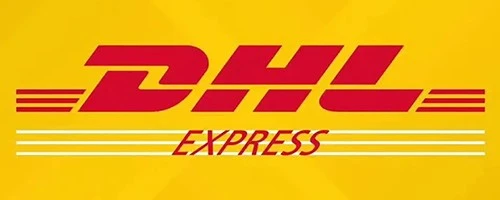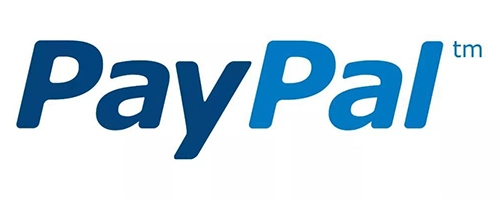- English
- Español
- Português
- русский
- Français
- 日本語
- Deutsch
- tiếng Việt
- Italiano
- Nederlands
- ภาษาไทย
- Polski
- 한국어
- Svenska
- magyar
- Malay
- বাংলা ভাষার
- Dansk
- Suomi
- हिन्दी
- Pilipino
- Türkçe
- Gaeilge
- العربية
- Indonesia
- Norsk
- تمل
- český
- ελληνικά
- український
- Javanese
- فارسی
- தமிழ்
- తెలుగు
- नेपाली
- Burmese
- български
- ລາວ
- Latine
- Қазақша
- Euskal
- Azərbaycan
- Slovenský jazyk
- Македонски
- Lietuvos
- Eesti Keel
- Română
- Slovenski
- मराठी
- Srpski језик
How to evaluate the price and cost-effectiveness of PCBA factories
In the PCBA(Printed Circuit Board Assembly) processing industry, the evaluation of price and cost-effectiveness is the key to selecting suitable suppliers and formulating procurement strategies. Reasonable prices can not only guarantee product quality, but also effectively control costs, thereby improving the competitiveness of enterprises. This article will explore how to evaluate the price and cost-effectiveness of PCBA factories to help enterprises make wise decisions among many suppliers.

1. Analyze the total cost structure of PCBA processing
Raw material cost
Raw materials are one of the main costs of PCBA processing, including PCB boards, electronic components, solder, etc. Different types of raw materials and different procurement channels will have an impact on prices. When evaluating the price of PCBA factories, you first need to understand the source of its raw materials, price fluctuations, and whether it can provide a stable supply of high-quality raw materials.
Labor cost
Labor cost accounts for an important proportion in PCBA processing. The price difference of labor, the technical level of production workers and their work efficiency will affect the final processing cost. Understanding the labor cost of PCBA factories and the degree of automation of their production lines can help companies evaluate whether they can reduce labor costs through automation, thereby improving cost-effectiveness.
Equipment and technology investment
Efficient equipment and advanced production technology can improve production efficiency and reduce material waste, thereby reducing the cost per unit product. When evaluating the factory price, you need to understand its equipment updates, technology research and development investment, and the degree of automation in the production process. Choosing a PCBA factory with advanced technology and equipment may have a higher initial cost, but it can achieve higher cost-effectiveness by improving production efficiency and reducing defective product rates.
2. Understand the production efficiency of PCBA processing
Production cycle and delivery time
Production efficiency directly affects the total cost of PCBA processing. The longer the production cycle, the higher the cost of a single product. To evaluate the production efficiency of a factory, we must not only look at the length of production time, but also pay attention to whether it can be delivered on time. Delayed delivery will not only increase the customer's inventory cost, but may also cause the customer's production line to stagnate, affecting the stability of the entire supply chain.
Quality control and defective product rate
Quality control is another important factor affecting the cost of PCBA processing. High-quality PCBA products can reduce rework and scrap rates, thereby saving production costs. Evaluating the factory's quality management system and understanding its defective product rate and quality control standards can help companies reduce rework costs or product quality problems that may occur later. By choosing a factory with strict quality control, companies can improve the stability of the overall product and reduce unnecessary waste.
3. Evaluate the cost-effectiveness of price and service
Price competitiveness
When evaluating the price of a PCBA factory, it is necessary to compare the price with similar suppliers in the market. However, a low price alone does not mean a higher cost-effectiveness, because a low price may mean a lower quality standard or higher subsequent costs. Enterprises should consider factors such as price and service quality, production cycle, quality stability, etc. to find the supplier that best meets their needs.
After-sales service and technical support
PCBA processing is not just a production process, but also involves design optimization, product debugging and technical support. A factory that provides high-quality after-sales service and technical support can help companies solve problems in a timely manner when products have problems, thereby reducing the additional costs caused by product returns and customer complaints. When evaluating a PCBA factory, in addition to paying attention to price, it is also necessary to consider whether the factory can provide long-term technical support and a complete after-sales service system.
4. Comprehensive consideration of supply chain and logistics costs
Supply chain stability
The supply chain management of a PCBA factory directly affects price and cost-effectiveness. A stable supply chain can ensure the timely supply of raw materials and reduce the risks caused by material shortages or fluctuations in procurement prices. When evaluating a PCBA factory, companies need to understand its supplier network, supply chain risk management capabilities, and emergency response mechanisms to ensure that they can respond quickly when supply chain problems arise.
Logistics and transportation costs
Logistics costs also have a great impact on the overall cost of PCBA processing. Choosing a PCBA factory that is geographically close can reduce transportation costs and reduce material losses and delays caused by long transportation. When evaluating a factory, companies need to consider the convenience and cost of transportation, especially in the case of cross-border procurement, where transportation costs have a greater impact on the overall price.
5. Long-term cooperation and continuous cost control
Price stability of long-term cooperation
Establishing a long-term cooperative relationship with a PCBA factory helps stabilize prices, and through long-term procurement, improves negotiation power and obtains better price conditions. When evaluating a PCBA factory, you can pay attention to its long-term cooperation with customers, understand whether there is a large price fluctuation, and whether it can maintain price stability during the contract period.
Continuous improvement and cost optimization
Choosing a PCBA factory that is willing to work with customers to improve and optimize production processes can help companies continuously reduce production costs in long-term cooperation. Through technology upgrades, process improvements and production efficiency improvements, factories can help companies reduce the cost of unit products, thereby improving overall cost-effectiveness.
Summary
Evaluating the price and cost-effectiveness of PCBA factories requires a comprehensive analysis from multiple perspectives, including raw material procurement, labor costs, equipment technology, production efficiency, after-sales service and supply chain management. Companies should find a balance between price and quality, and choose suppliers that can provide high cost-effectiveness and high-quality services, so as to achieve cost savings and improve competitiveness during PCBA processing.
Send Inquiry
-
Delivery Service






-
Payment Options









